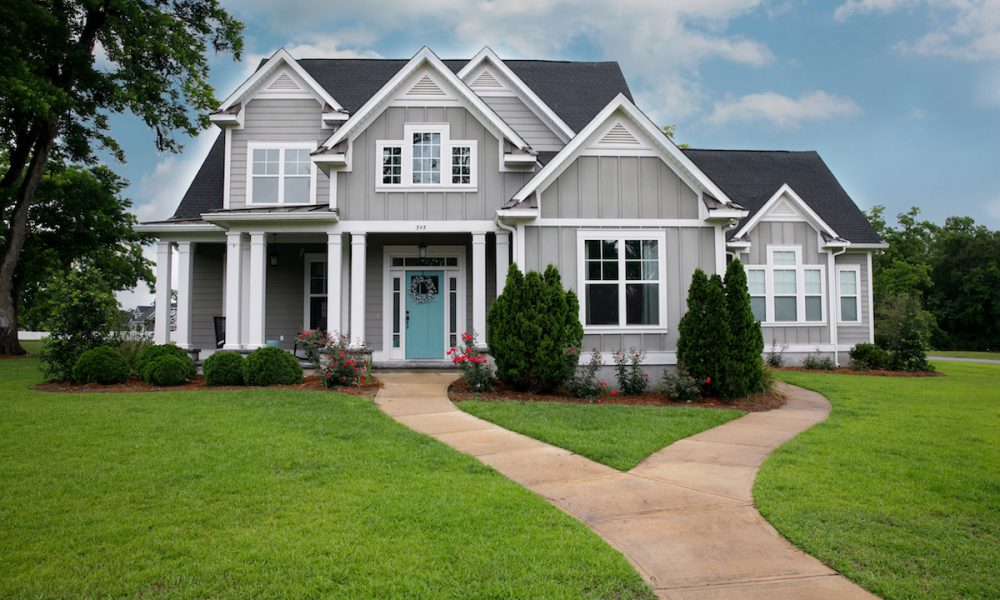
“If you live in the southeast, centipedegrass is a good candidate for your lawn. It’s a low-maintenance, heat-tolerant grass that prefers to grow in the acidic, sandy soils found throughout the southeast from the Carolinas to the gulf coast of Texas. Outside of this area, the winters are too cold or the soil is too alkaline for centipedegrass to survive. Centipedegrass tolerates some shade and thrives in the shifting shade you find under pine trees. Also, it requires less mowing and fertilizer than other warm-season grasses,” reports Scotts.
Description
Centipede grass is a warm season lawn grass. It is a thick sod forming grass that spreads by stolons, and is medium to light green colored. It has a coarse texture with short upright seed head stems that grow to about 3-5 inches. Centipedegrass is a low maintenance grass. It requires infrequent mowing.
Uses
“Centipedegrass is a slow-growing, apple-green colored, coarse-leaved turfgrass that is adapted for use as a low maintenance, general purpose turf. It requires little fertilizer, infrequent mowing, and will tolerate moderate shade, explains Home & Garden Information Center at Clemson Cooperative Extension.
Benefits
There are many benefits to planting Centipedegrass:
- Excellent heat tolerant
- Perfect for Southeast lawns
- Low maintenance and nutrient requirements
- Requires little fertilizer
- Moderate shade tolerance
- Requires infrequent mowing
Drawback
Don’t be alarmed if your centipedegrass doesn’t sprout right away. It can be a little slow to get started, taking anywhere from 10 to 28 days to germinate. It does not tolerate heavy traffic.
Steps for Healthy Lawn
The best time to start a centipedegrass lawn is late spring through early summer. Since centipedegrass is a warm-season grass, the soil has to be good and warm (at least 70 degrees) before seeds will germinate.
There are several steps to consider when wanting to achieve a healthy and beautiful law:
- Lawn Analysis.
- Aerate your Lawn.
- Seeding.
- Optimal Fertilizing, Weed, Insect and Disease Control.
- Proper Watering.
- Cutting the Correct Height.
If you are not familiar with Centipedegrass, it is in your best interest to make sure you talk with or hire a Lawn Care Service that is knowledgeable in this area to know fertilization schedules, over-seeding management techniques, utilization of intense mowing schedules for shorter mowing heights than most lawns, accurate irrigation and drying procedures.
Soil Test / Fertilizing
For best results with your existing grass, conduct a soil test to check the pH and acidity levels. This will help you determine if and what type of grass seed, lime and fertilizer to put down. Your local Pest and Lawn Control Company can perform a soil test for you.
Watering
The goal is to water your lawn properly so that it will grow longer, deeper roots and will be more drought tolerant. Grass needs about one inch of water per week to thrive. It is suggested to water your lawn in the morning once a week so it has a chance to dry between soakings. If you overwater, it increases the possibility of disease for your root system.
Weeding
For a healthy lawn, you’ll need ongoing lawn care that includes using a weed control. To determine what specific weed-control plan is right for your lawn, you’ll need to determine what type of grass and weeds you have. Your lawn expert can tell you and recommend the ongoing lawn care that will give you that incredible manicured green thick lawn that you want.
Mowing
Centipedegrass should be maintained at 1½ to 2 inches tall — any higher and you start to see excess thatch develop. Also, make sure your mower blade is nice and sharp for a good, clean cut and only remove the top ⅓ of the grass blades at any one time.
Contact Us
Choose Proactive Pest Control for professional, comprehensive, guaranteed pest and lawn management. The pros at Proactive will work diligently to gain your trust, confidence, and your total satisfaction. CALL US TODAY at 770-800-PEST to schedule a free, no obligation inspection and evaluation for your home or business. Or, contact us for a FREE consultation. Let us show you why Proactive Pest Control is northeast Georgia’s first choice for pest, termite, and lawn services.